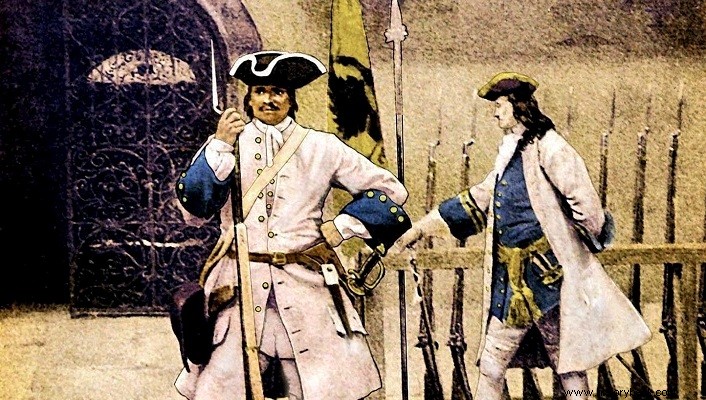
When in 1683 Prince Eugene assumed his first command, Emperor Leopold's army could be described as modern. The modernization of the army was an arduous task undertaken by the Italian-born general Montcuccoli, immediately after the Thirty Years' War (1648) had almost ended.
Montecucoli was the first European general to realize that the power of the infantry came from the volume of fire it was able to unleash and not from the sweeps it could bring. For this reason he reduced the number of skirmishers per infantry battalion to 1/5 of his regular strength. The depth of the formations also decreased and from 8-10 yokes it reached 5 and later 4.
The infantry was equipped with the musket with a fuse firing system. This weapon had a 50% malfunction rate. His rate of fire was up to one shot per minute. The infantry fired in pairs or groups—the entire battalion together. These weapons were kept in service in the imperial army until 1710. By 1700, however, the process of replacing them with more sophisticated flintlock muskets had begun.
Along with these weapons, the infantry were also equipped with the first bayonet model that allowed them to be mounted in parallel. It was the "ring-shaped" bayonet, which was adapted to the barrel of the weapon.
Eugenius, when he assumed independent command, took over an army that was still on the verge of these changes. However, he himself proved that, regardless of weapons and tactics, the personality of each general also counts.
Eugene was not much of a reformer, when it came to tactics or rearming the army. He simply made masterful use of the existing organizational structures, of course always asking for their change. He was, however, the man who, with his energy and wisdom, used the imperial army in such a way as to cover the weaknesses of this army.
Eugene and the imperial army formed a twin, a single whole. Each individual "piece" had serious weaknesses. But when the parts of the "machine" were assembled then, as if by magic, the weaknesses were eliminated and the machine worked flawlessly. Eugene knew the weaknesses of the army and commanded accordingly, making them less obvious.
Many of the problems of the Imperial Army, throughout its existence, stemmed from the fact that it had two main opponents to fight, two opponents with completely different organization, composition, armament, and tactical doctrine. These opponents were the French in the West and the Ottomans in the East. The imperial army therefore had to be adaptable to each tactical situation, something very difficult to achieve in this period.
Eugene, however, managed to give the imperial army a characteristic it had always lacked, speed. Taking full advantage of the potential of each weapon, as an excellent orchestra conductor, Eugene managed to combine and coordinate the action of various departments. Both his reaction before the battle of Zenda and his first lightning campaign in Italy in 1701 prove that he was capable of handling his divisions in such a way as to force them to perform to the best of their ability.
Never before Eugene had the imperial infantry marched so rapidly. Thanks to his speed, he managed to overtake the enemy in Zenda and annihilate him in a famous 4 hours or so. The same thing happened in Italy, after the masterful crossing of the Julian Alps. The Austrians moved with such speed that the French did not have time to react, they lost the initiative of the movements and ended up simply following the developments and reacting afterwards to the movements of the enemies.
Later, during the War of the Spanish Succession, Eugene and his army were placed under the command of the English Duke of Marlborough. Thus it is not possible to draw conclusions for this period. The second Turkish (1716-18) was the peak of glory of Eugene and his army. For the first time in recent European military history a general used his entire army as a raiding force, launching surprise attacks against the Turks.
At the Battle of Belgrade in particular—a typical example of Eugene's tactical thinking—the imperial army moved as a body against the Turks and routed them in less than an hour. It was the perfect battle, the one that Eugene and every general always dreamed of. Eugene and his army had triumphed.
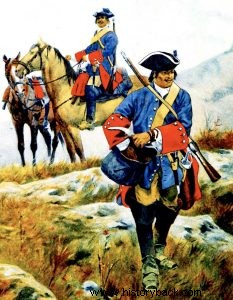
Elite dragons.
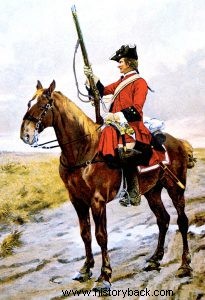
Dragoon of the 3rd Regiment.
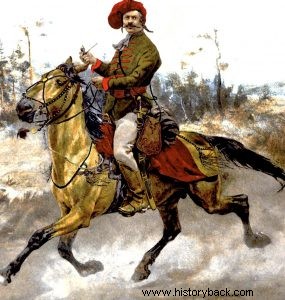
Hussar.
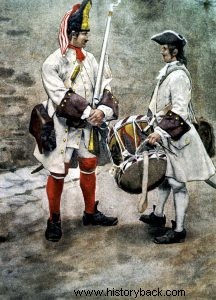
Grenadier and drummer.
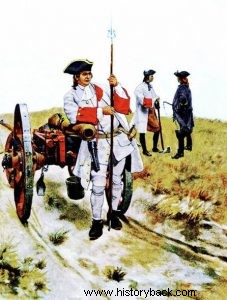
Shooter.
